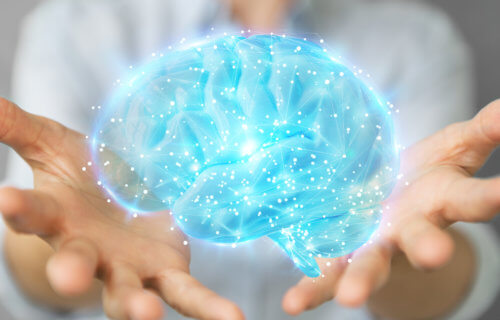GUILDFORD, United Kingdom — Countless students struggle with the unforgiving numerical formulas that make up so much of complex mathematics. Fascinating new research suggests a form of neurostimulation may help promote improved mathematical learning among those who habitually struggle with numbers and fractions.
Scientists from the Universities of Surrey and Oxford, Loughborough University, and Radboud University in the Netherlands all collaborated to put this unique project together. More specifically, study authors analyzed and investigated the impact of neurostimulation on learning. While more and more scientists have begun to express interest in neurostimulation as a non-invasive neurological technique, far too little is known about its possible neurophysiological side-effects and potential impact on learning.
Neurostimulation, generally speaking, can refer to numerous techniques centered on direct stimulation of the nervous system, usually through electrical currents, in an effort to modify or manage nervous system activities. For this study specifically, researchers chose to use electrical noise stimulation, which is a form of neurostimulation characterized by randomized electrical pulses.
Notably, this led to the finding that electrical noise stimulation over the frontal part of the brain appears to improve mathematical skills among people whose brains showed signs of being less excited by mathematics prior to the application of the stimulation. However, the team did not see any math improvements in others who already had a high level of brain excitation during the initial assessment or in the placebo groups. With all of this in mind, the research team theorizes electrical noise stimulation acts on the sodium channels in the mind, consequently interfering with the cell membrane of neurons, ultimately increasing cortical excitability.

“Learning is key to everything we do in life – from developing new skills, such as driving a car, to learning how to code. Our brains are constantly absorbing and acquiring new knowledge,” says study leader Professor Roi Cohen Kadosh, Professor of Cognitive Neuroscience and Head of the School of Psychology at the University of Surrey, in a media release.
“Previously, we have shown that a person’s ability to learn is associated with neuronal excitation in their brains. What we wanted to discover in this case is if our novel stimulation protocol could boost, in other words excite, this activity and improve mathematical skills.”
To conduct this research, the researchers recruited 102 volunteers. They assessed mathematical skills using a series of multiplication problems. Participants were then split into four cohorts. The first two consisted of a learning group exposed to high-frequency random electrical noise stimulation and an over-learning group in which participants practiced their multiplications “beyond the point of mastery” with high-frequency random electrical noise stimulation.
The other two cohorts, consisting of a learning and over-learning group, were exposed to a placebo condition or an experience just like real stimulation without the actual application of significant electrical currents. Additionally, scientists took EEG recordings at the beginning and at the end of the stimulation to gauge brain activity.
“These findings highlight that individuals with lower brain excitability may be more receptive to noise stimulation, leading to enhanced learning outcomes, while those with high brain excitability might not experience the same benefits in their mathematical abilities,” explains Dr. Nienke van Bueren from Radboud University, who led this work under Professor Cohen Kadosh’s supervision.
“What we have found is how this promising neurostimulation works and under which conditions the stimulation protocol is most effective. This discovery could not only pave the way for a more tailored approach in a person’s learning journey but also shed light on the optimal timing and duration of its application,” Prof. Kadosh concludes.
The study is published in the journal PLoS Biology.
You might also be interested in:
- Block play builds math skills, boosts complex thinking in preschoolers, study finds
- Electrical stimulation to one spot in the brain can treat mental illness
- X marks the unknown in algebra – but its origins are truly a math mystery

